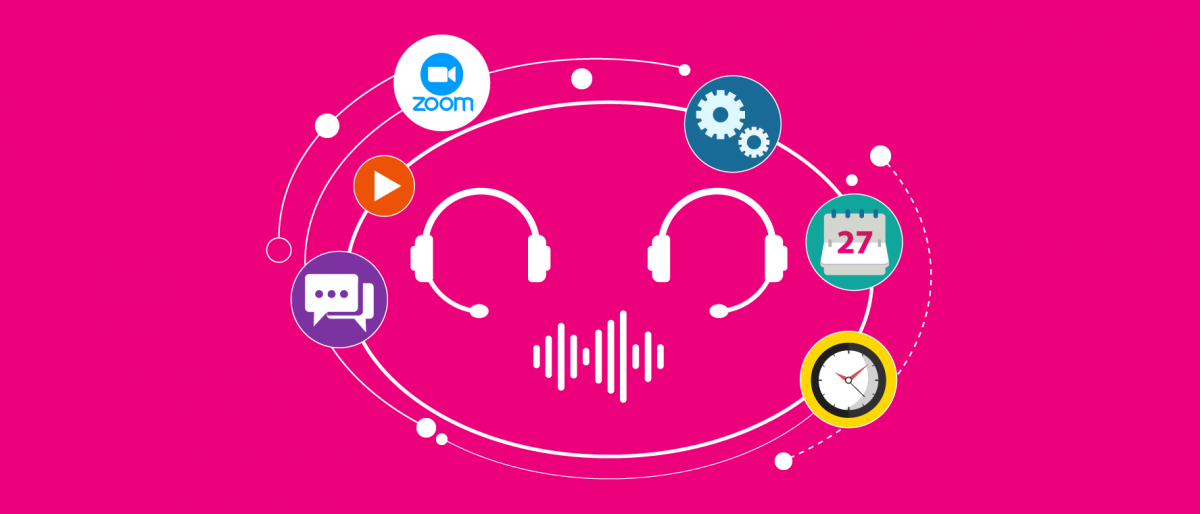Our Thinking, Remote First Thu 26th March, 2020
New to running interviews remotely? This is how we are doing it
As reality kicks in and changes our world, remote working becomes the interaction of choice for many organisations. We believe that successful organisations look beyond remote meetings but enable their talent by allowing for all types of interactions to happen remotely.
Most recently, we have seen an increased need to run collaborative workshops as well as interviews remotely. And we think we are doing this well. So we want to share our experiences and learnings.
In this post, we’ll be sharing the challenges we find, and approaches we take when running remote interviews. This builds on our remote working playbook, which contains hints and tips for running a remote team in general.
One remote – all remote
We follow the paradigm that if one person is remote, everyone is remote. This means that even if two out of the three people are in the same physical location, behave as if you are remote. Open your own laptop, and turn on your video. This creates the best overall experience. This provides a more inclusive environment for those who are remote and levels the playing field for all participants, especially in interviews.
In fact, candidates have given us feedback that suggests that they prefer the “all remote” scenario as it makes for better interactions and more natural communication (compared to a ‘half-way house’).
Remember, as we will be working remotely more frequently, be this with colleagues or with clients, a remote interview can be a good indication of a candidate’s ability to work in this manner.
How we interview
For non-coding roles, the interviews consist of open conversations and case studies. For the case study, the candidate and their interviewers play through the scenario collaboratively, and most candidates will want to draw or otherwise visualise their ideas.
This means that we not only want to hear and see each other, but share drawings and visualisations remotely and allow collaboratively exploring and changing these.
Tools we use
Communication and screen sharing – Zoom
Use a high-quality and easily accessible communication tool, and we’ve found Zoom currently has the best quality. Ensure you have high-quality headphones with a good boom microphone.
General visual idea sharing and collaboration – G Suite or Miro
Use an easy-to-use real-time collaboration tool (or any other reasonable tool the candidate may suggest). Candidates in the past have successfully scribbled on paper or a wall and pointed the camera. It is not ideal, but it works.
Make it easy for the candidate
- Share the conference details well in advance.
- Manage candidate expectations: Make the candidate aware of the need for good connectivity and conducive set-up and surroundings. Explain how the interview will unfold and what the various remote tools will be used for.
- Test the technology: Provide guidelines for the candidate to test their set-up beforehand and familiarise themselves with the collaboration tool. We have seen interviews get cancelled because one party couldn’t get their audio to work.
- Provide exercise materials: Share case study-based exercises either a day before for the candidate to have a quick read or at the start of the interview, and then allow the candidate some prep time as part of the interview.
- Put your candidate at ease: Interviewing is hard; remote interviewing is harder. Be mindful of the stress a candidate is under. Put them at ease and cut them some slack. Form a connection, similarly to as you normally would.
Be prepared
- Pre-meet to align with your co-interviewer: As we always co-interview, briefly meet your interview partner prior to an interview to align procedures and tools.
- Kick off earlier: Connect with your co-interviewer at least 15 minutes prior to the actual interview to ensure you are set up. The remote call should be “live” when the candidate joins.
- Get your set-up right: Find a quiet and low-echo space. Make sure that everyone can see and hear each other and that any scribbles (digital or otherwise) can be seen and read by everyone.
- Have a headset: Make sure your headphone and microphone work well. We prefer this over conference call speakers.
Run it well
- Introduce yourselves: With remote interviews, it is easy to “jump into it”. Don’t forget to introduce yourselves, explain what’s going to happen, and make a bit of chit-chat to lighten the mood. This is even more important should only one person be remote.
- Preparation time: Stay online during the time we give to the candidate to prep, so the candidate has a feedback line in case they need support. You may wish to turn off your video and mute your microphone.
- Keep time: Set clear expectations with all parties in regards to timekeeping, especially if you go mute or offline during preparation time.
Troubleshooting
- Bad connectivity: Do introductions via video, then turn the video off.
- No Audio: Have a fallback solution if the candidate cannot get their audio to work (it has happened before)
We hope you found this information useful and are able to put it to good use. And as mentioned above, feel free to check out our remote working playbook which is full of further suggestions. If you would like a short consultation on running remote workshops or want help and advice about running remote teams, get in touch with us at remote-working@equalexperts.com
If you want to learn some of the techniques we use to build high-performing remote-first teams watch this webinar.



